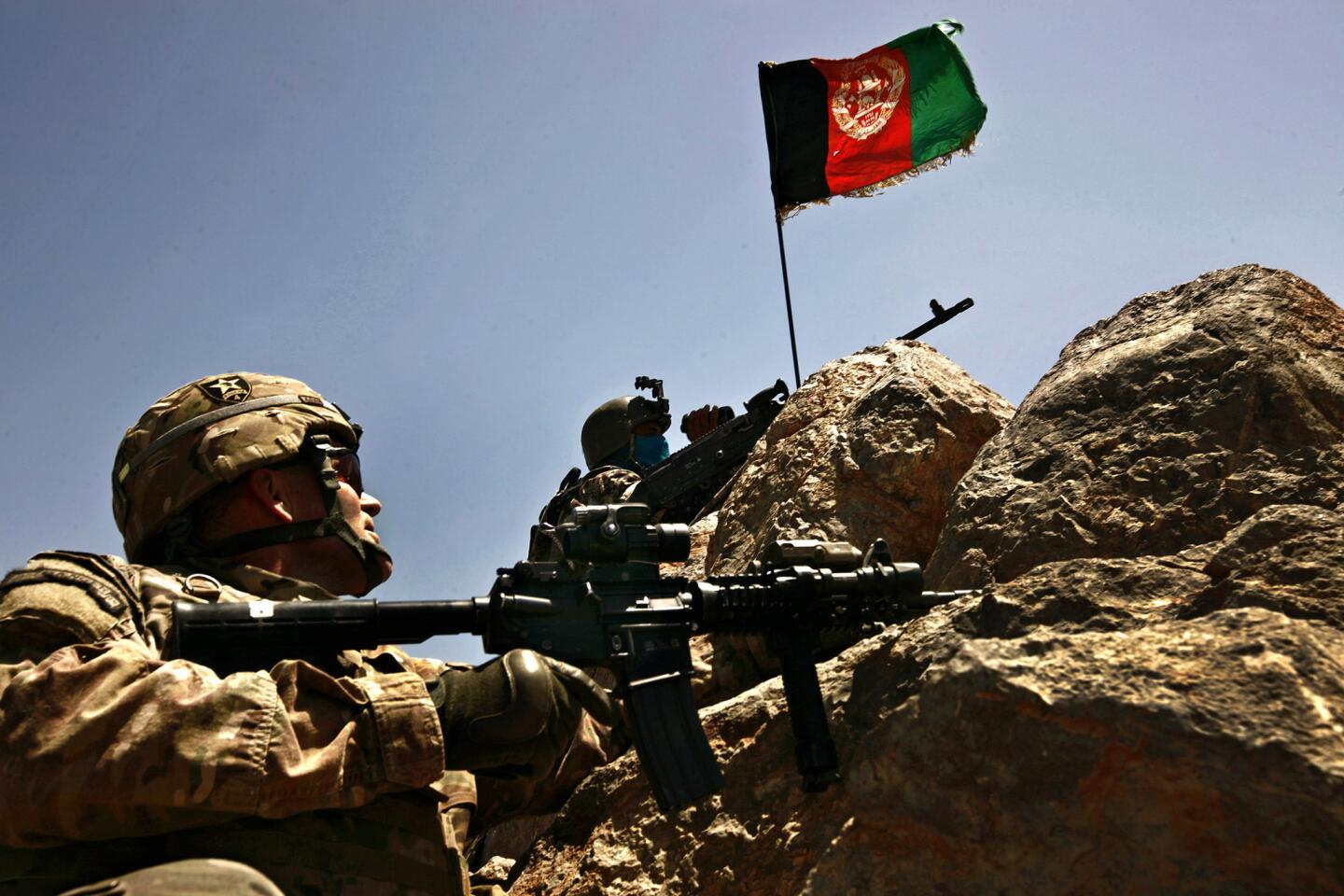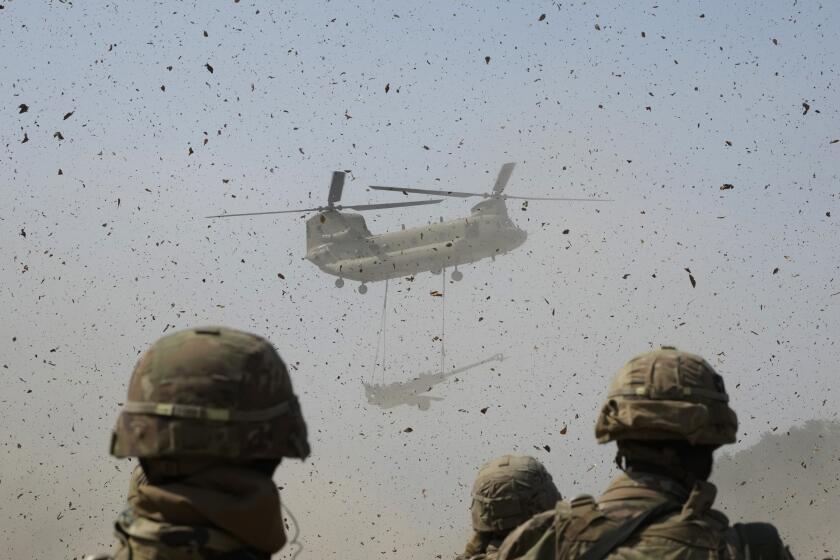Many Afghans seethed under the Taliban’s brutal eight-year domination of Panjwayi district in Kandahar province in southern Afghanistan. Their sudden defiance has helped embolden Afghan security forces who themselves have long been intimidated by the insurgents.
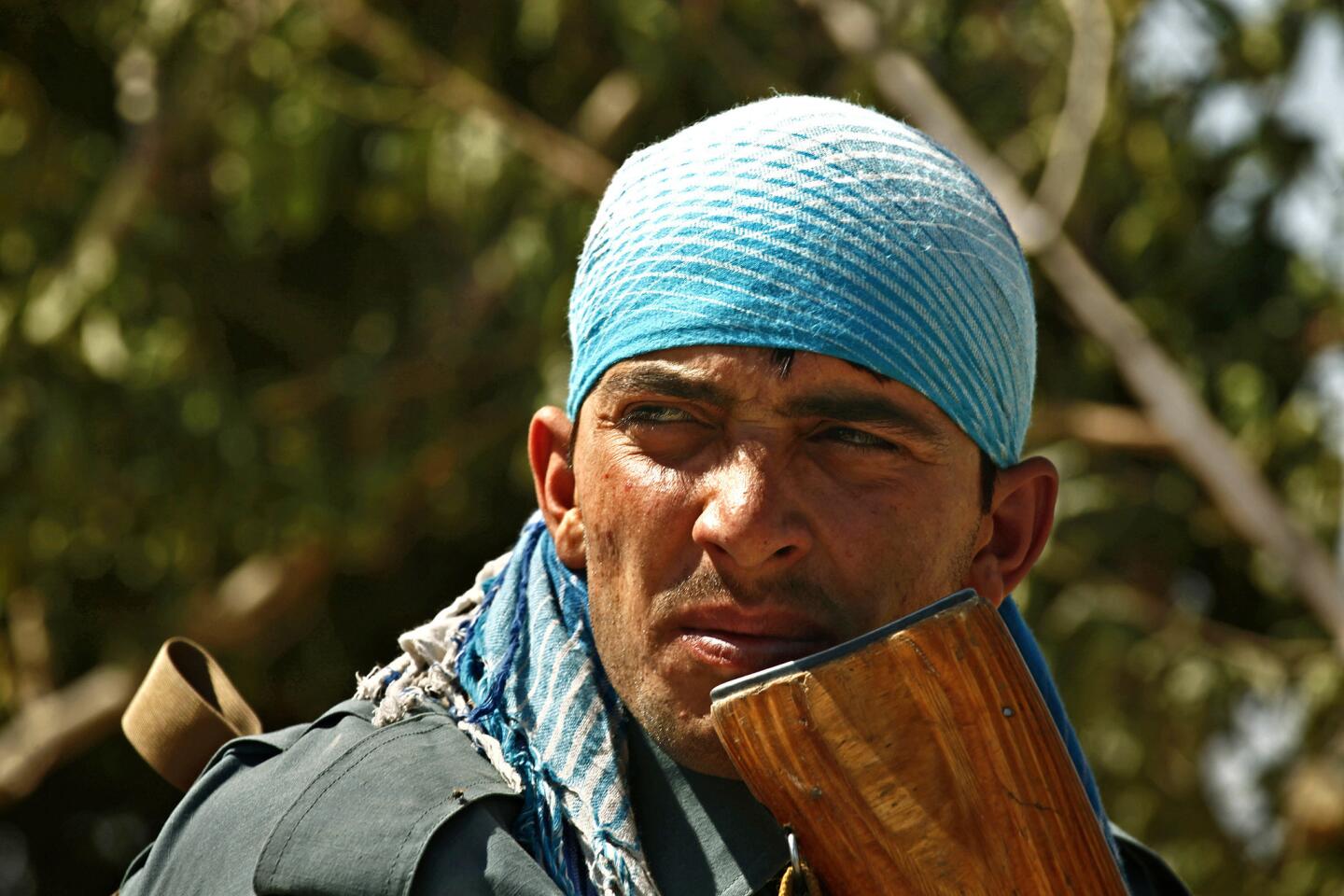
A fresh recruit with a newly formed police force holds his weapon in Panjwayi district in Afghanistan. (Carolyn Cole / Los Angeles Times)
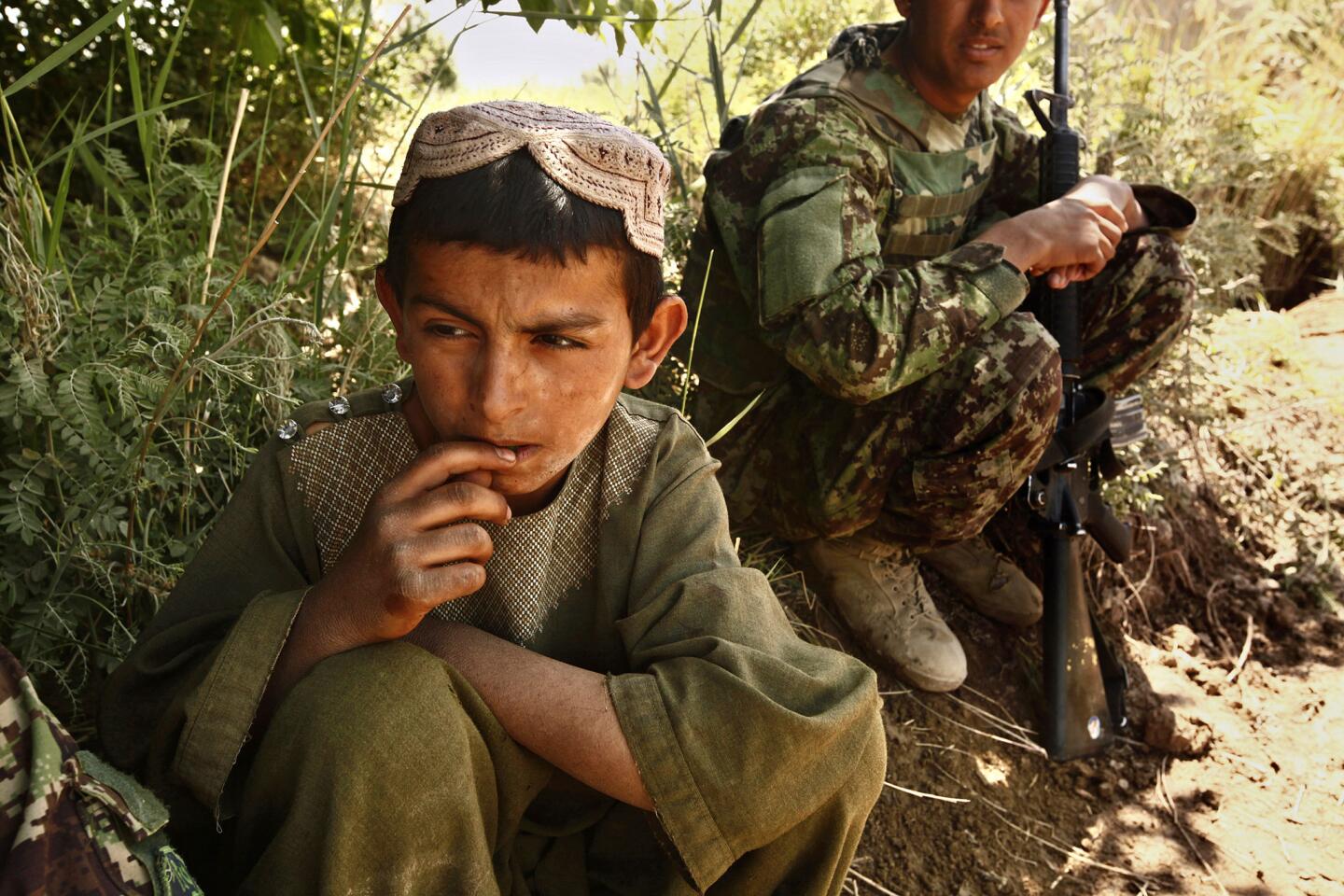
An Afghan soldier, background, stays in the shade during the midday heat in Panjwayi district, with a 9-year-old boy nearby. The boy, like many here, doesn’t go to school because of the ongoing struggle with the Taliban in this Kandahar region. (Carolyn Cole / Los Angeles Times)
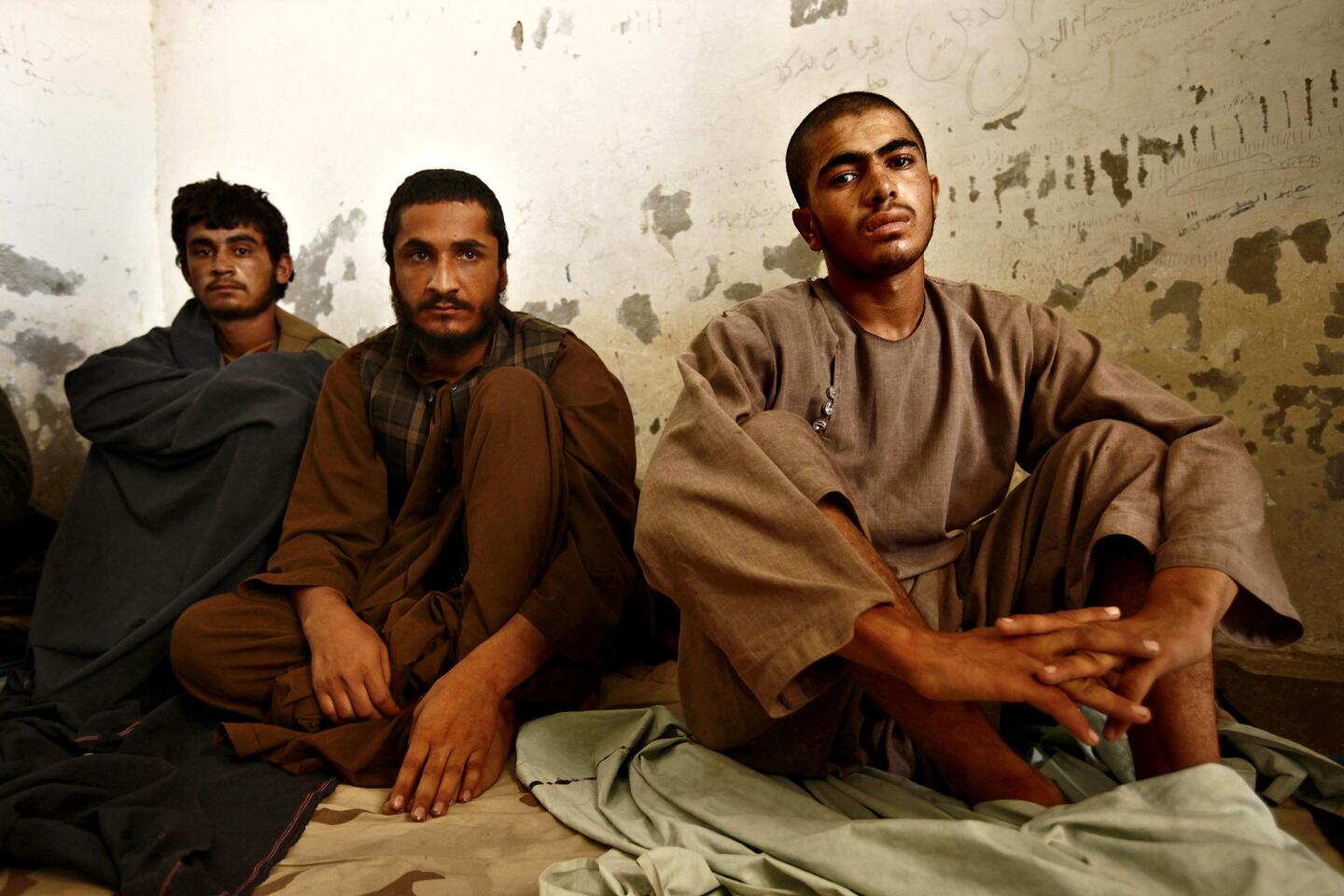
Taliban prisoners are held in a central police station in Panjwayi district in Kandahar, which has been a stronghold of the Islamic militant group. A civilian uprising against the Taliban has allowed Afghan security forces to take new territory in the district. (Carolyn Cole / Los Angeles Times)
Advertisement
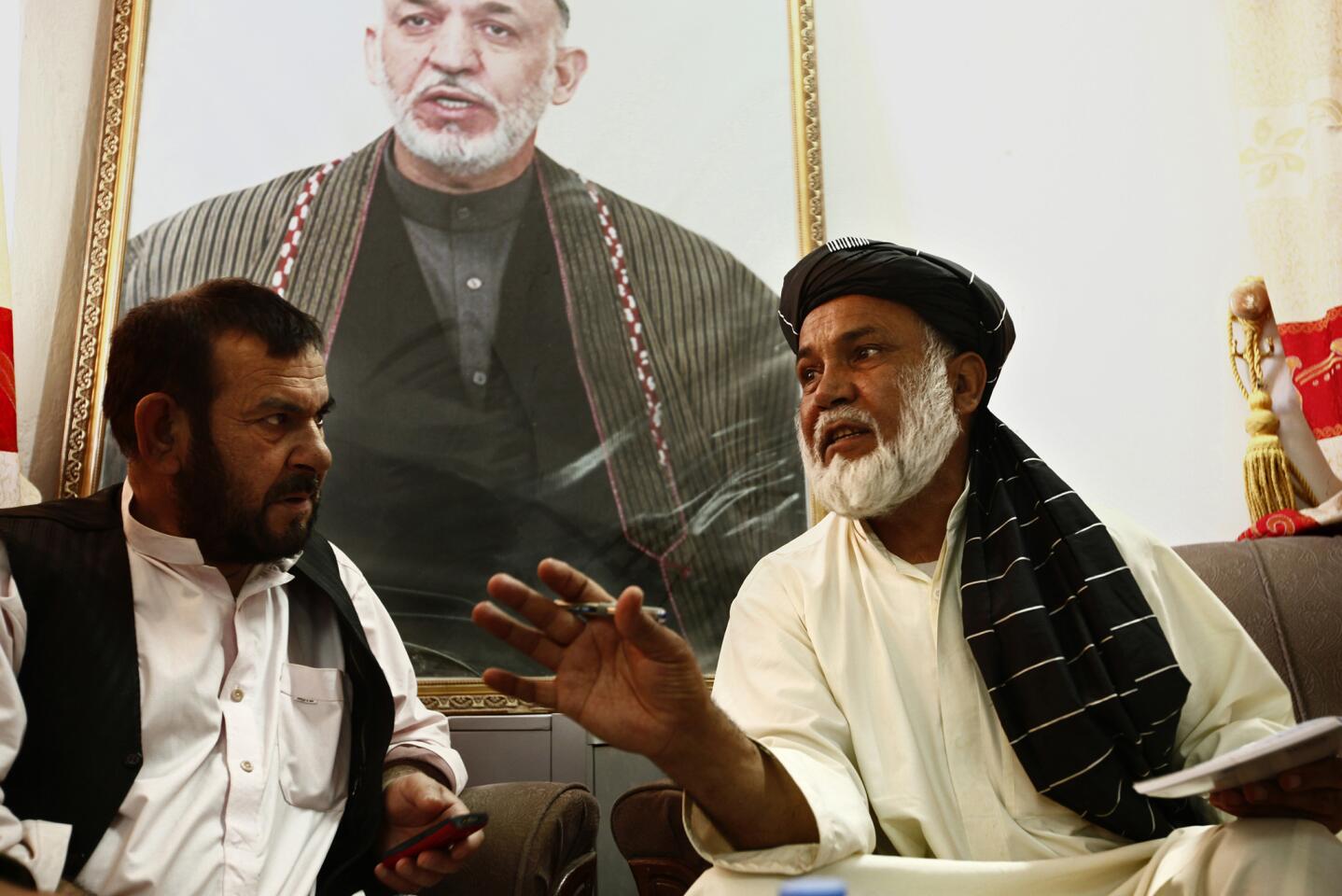
Panjwayi district Police Chief Sultan Mohammad, left, and district Gov. Haji Faizal Mohammad talk below a portrait of Afghan President Hamid Karzai. Speaking of the Taliban, Chief Mohammad says, “They’re cowards. The people hate them.” (Carolyn Cole / Los Angeles Times)
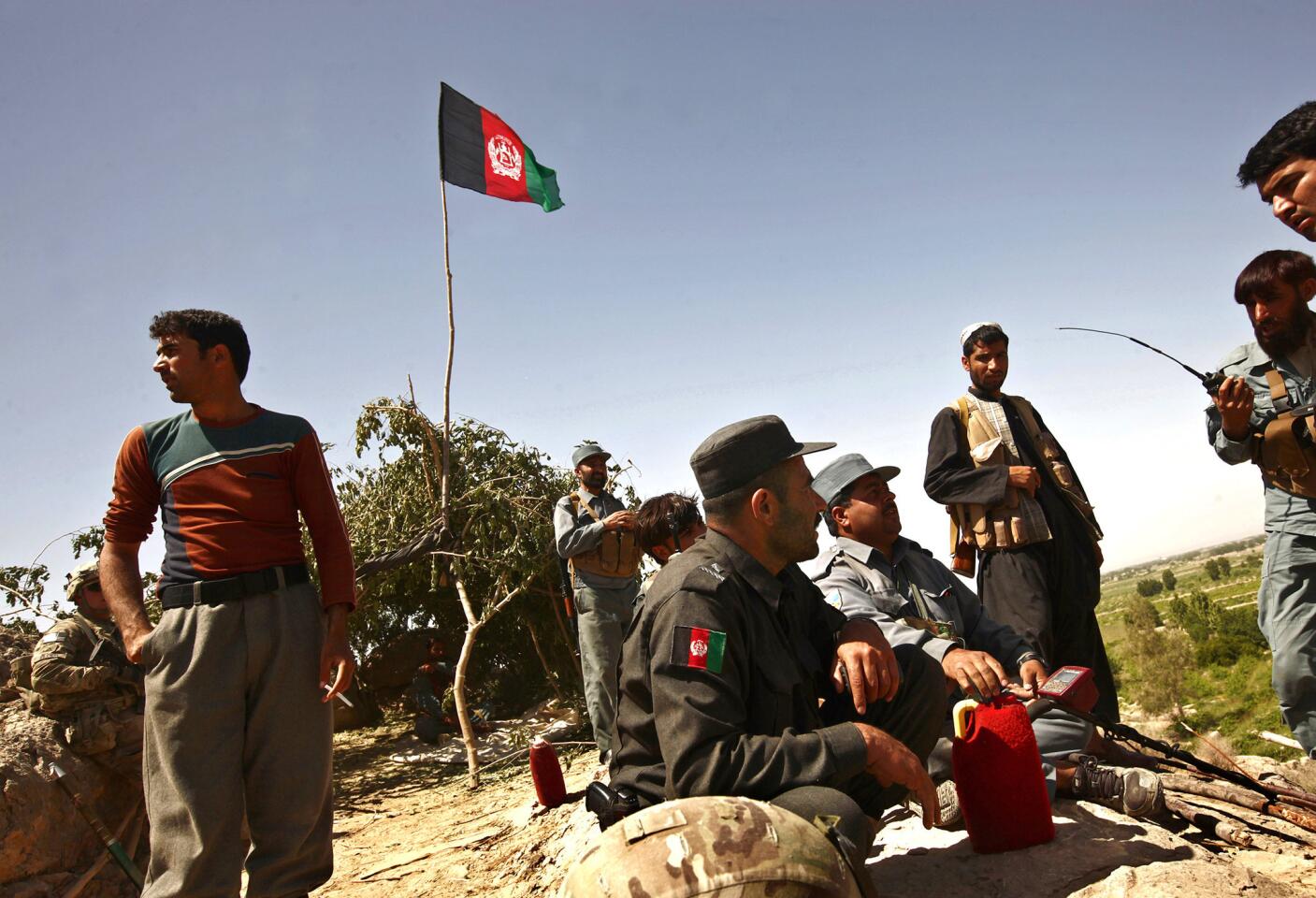
Afghan security forces in Kandahar’s Panjwayi district have pushed farther into Taliban territory, including taking the high ground at Dragon’s Back, where they set up observation posts. (Carolyn Cole / Los Angeles Times)
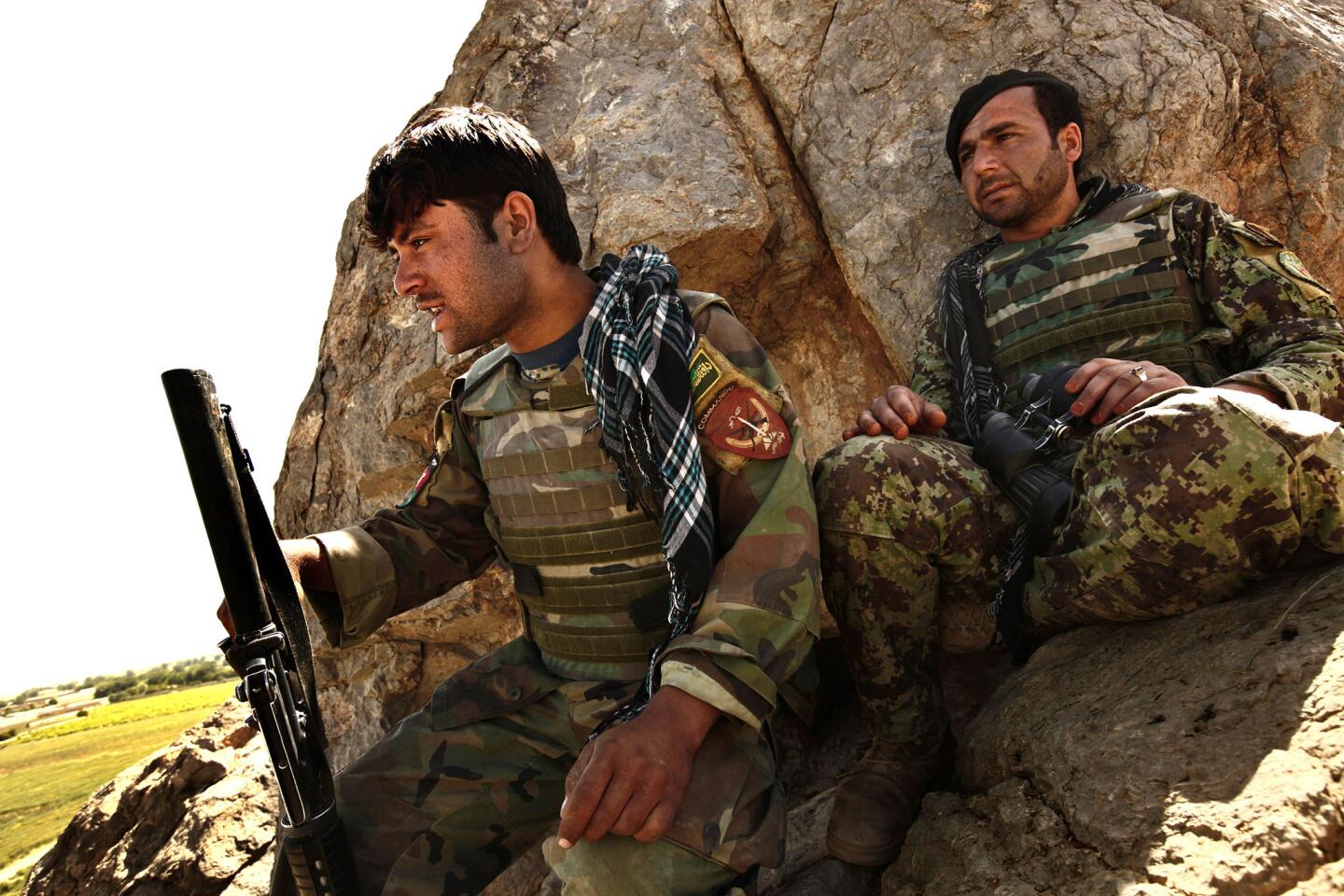
Afghan soldiers keep watch at the top of one of the three peaks that make up Dragon’s Back in Panjwayi district. The observation post is fired on by Taliban fighters almost every day, one commander says. (Carolyn Cole / Los Angeles Times)
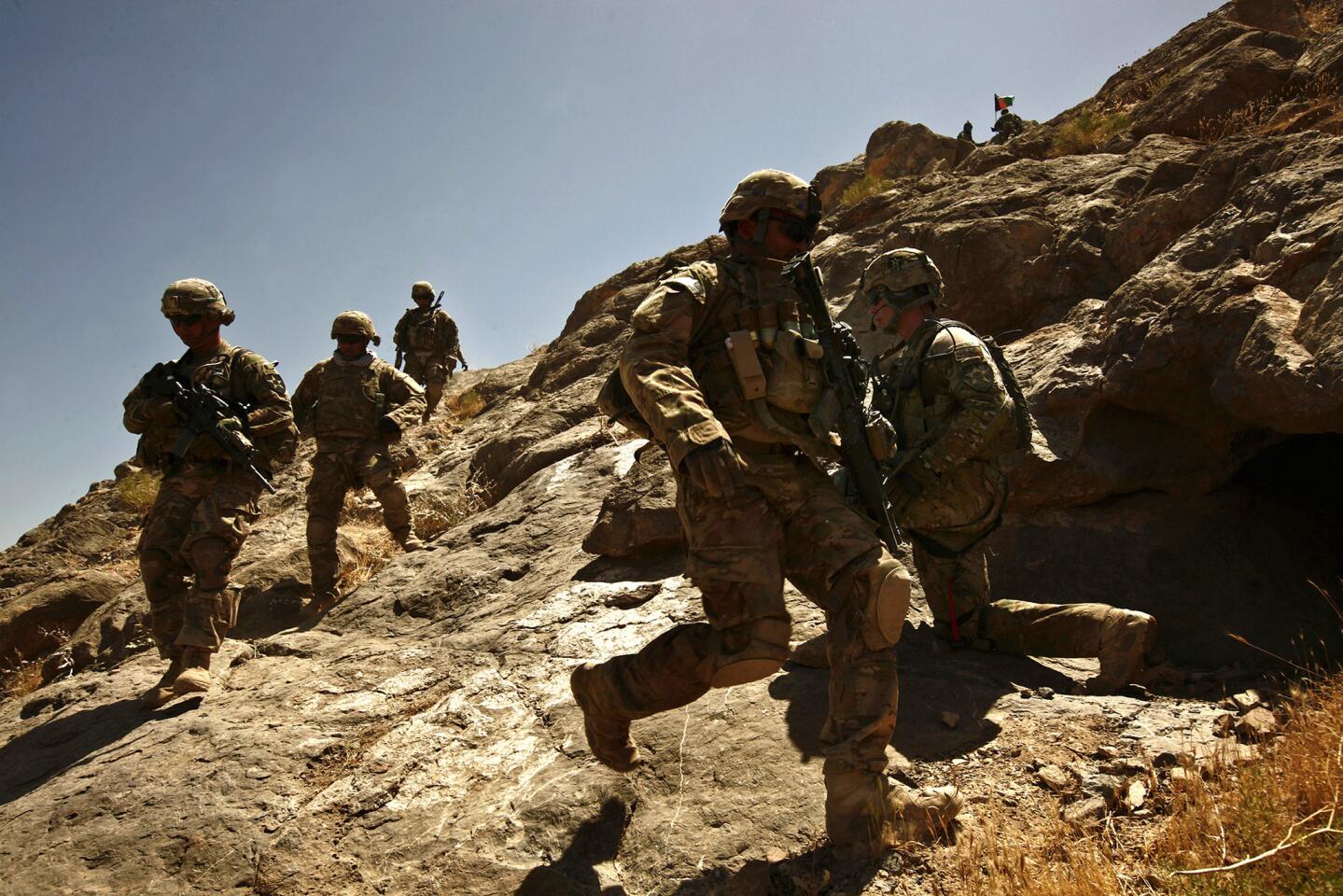
U.S. soldiers make their way down Dragon’s Back after visiting Afghan security forces. (Carolyn Cole / Los Angeles Times)
Advertisement
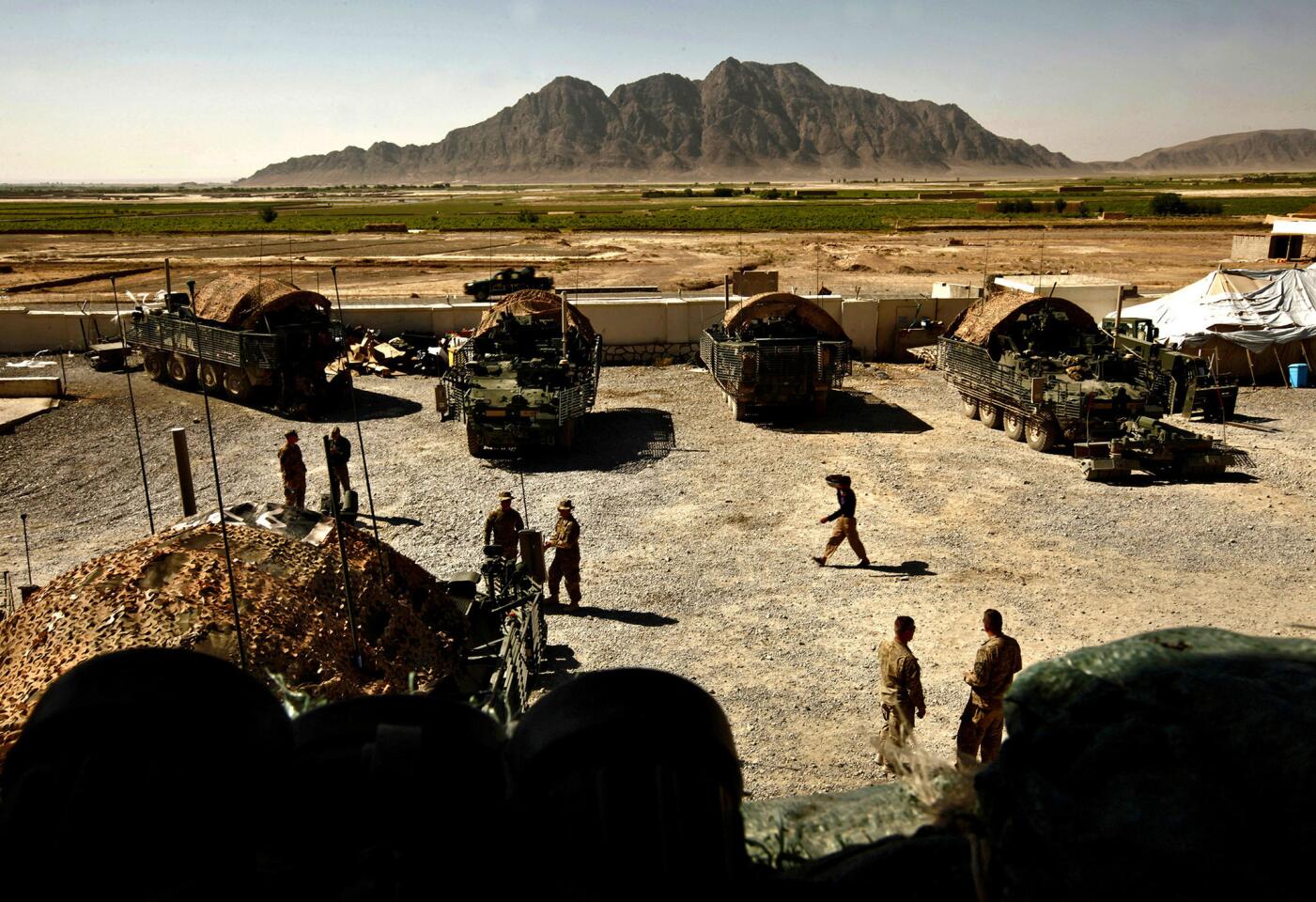
U.S. forces attend a meeting at the Panjwayi district governor’s office, nicknamed Wall Street, where representatives of the police, army and government discuss security issues once a week. (Carolyn Cole / Los Angeles Times)
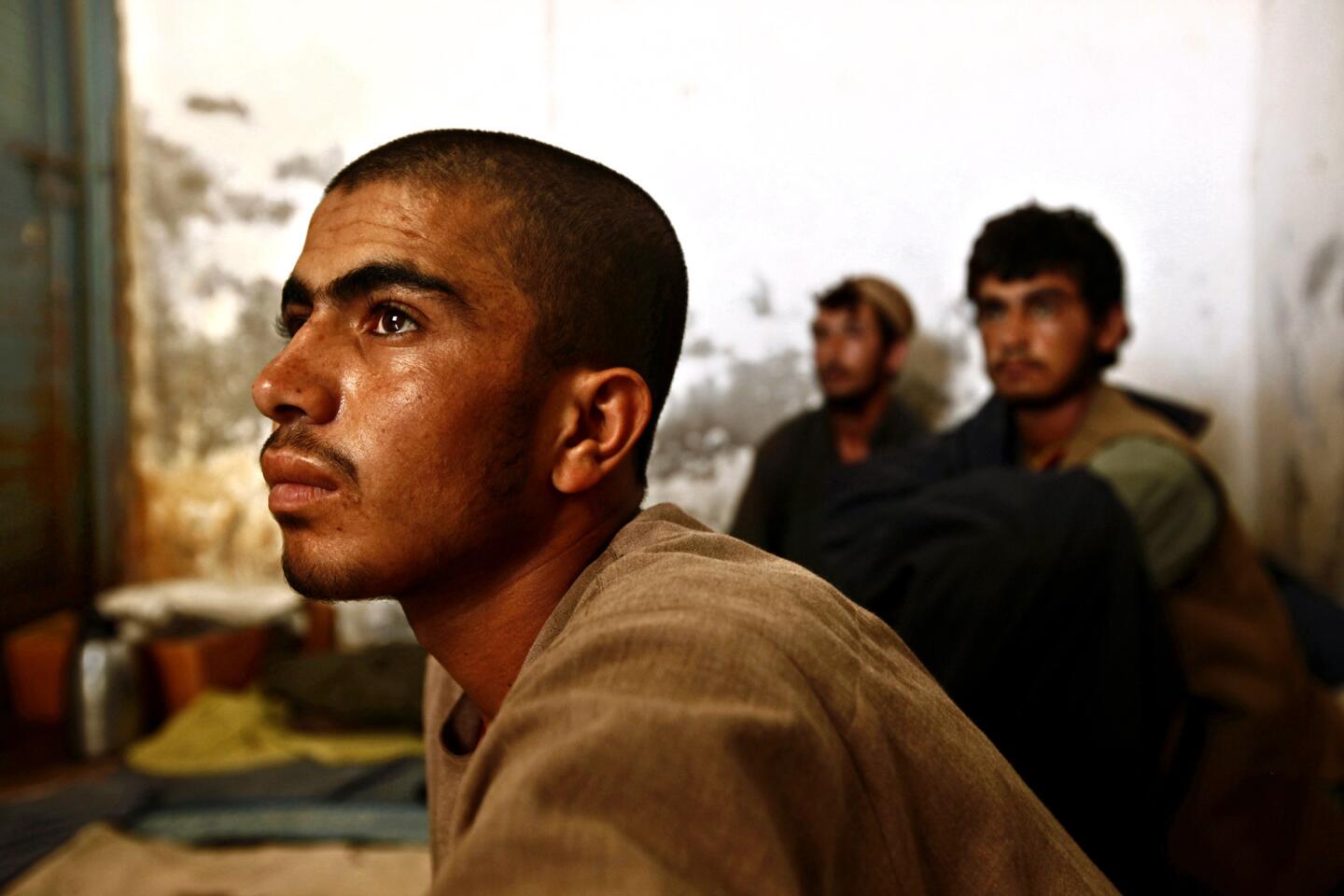
Taliban prisoners sit in a central police station in the Panjwayi district of Kandahar. (Carolyn Cole / Los Angeles Times)
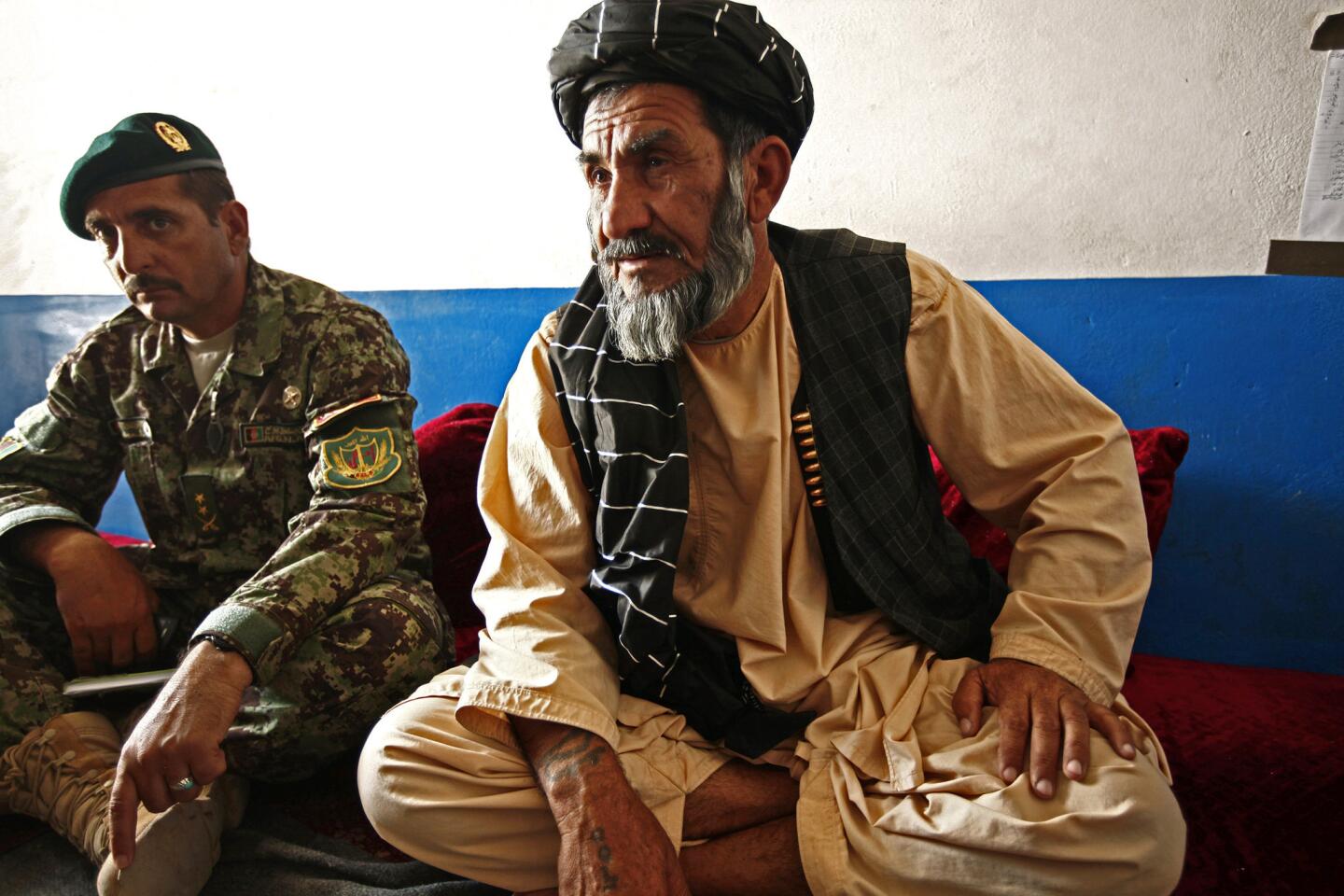
Hajji Abdul Wudood, right, decided to take a stand against the Taliban after an insurgent commander came to his home and asked him to hand over one of his sons. “I knew if I let them take my son, they would kill him,” recalls Wudood, who refused. His bold action ended up setting off a revolt against the Taliban in Panjwayi district. (Carolyn Cole / Los Angeles Times)
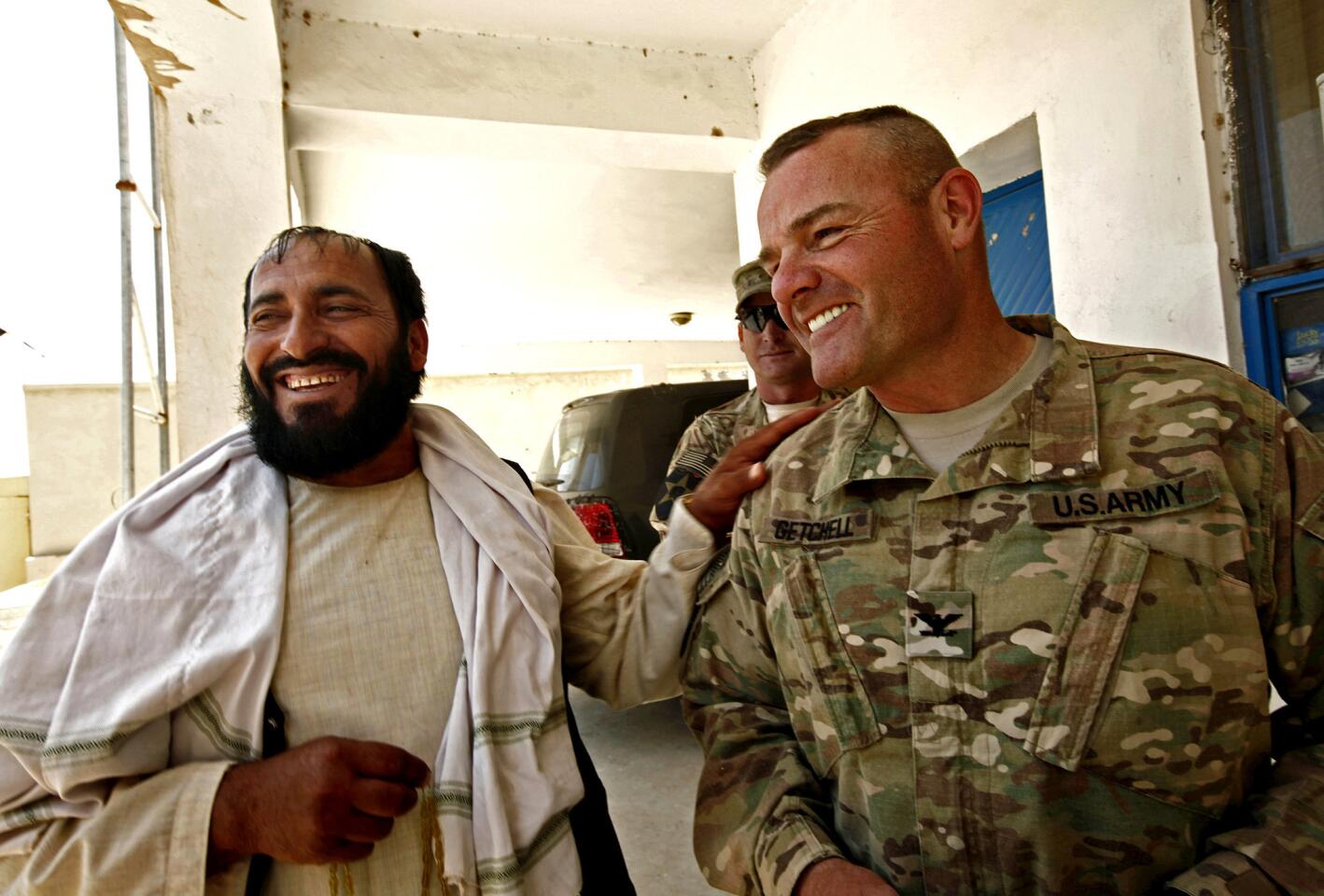
“We’re on the sidelines, and that’s a good thing,” says Col. Michael Getchell, who commands a U.S. brigade in the Panjwayi district and has become acquainted with many of the local leaders. “It’s their uprising. If we go in and try to claim it, it’s just going to die.” (Carolyn Cole / Los Angeles Times)
Advertisement
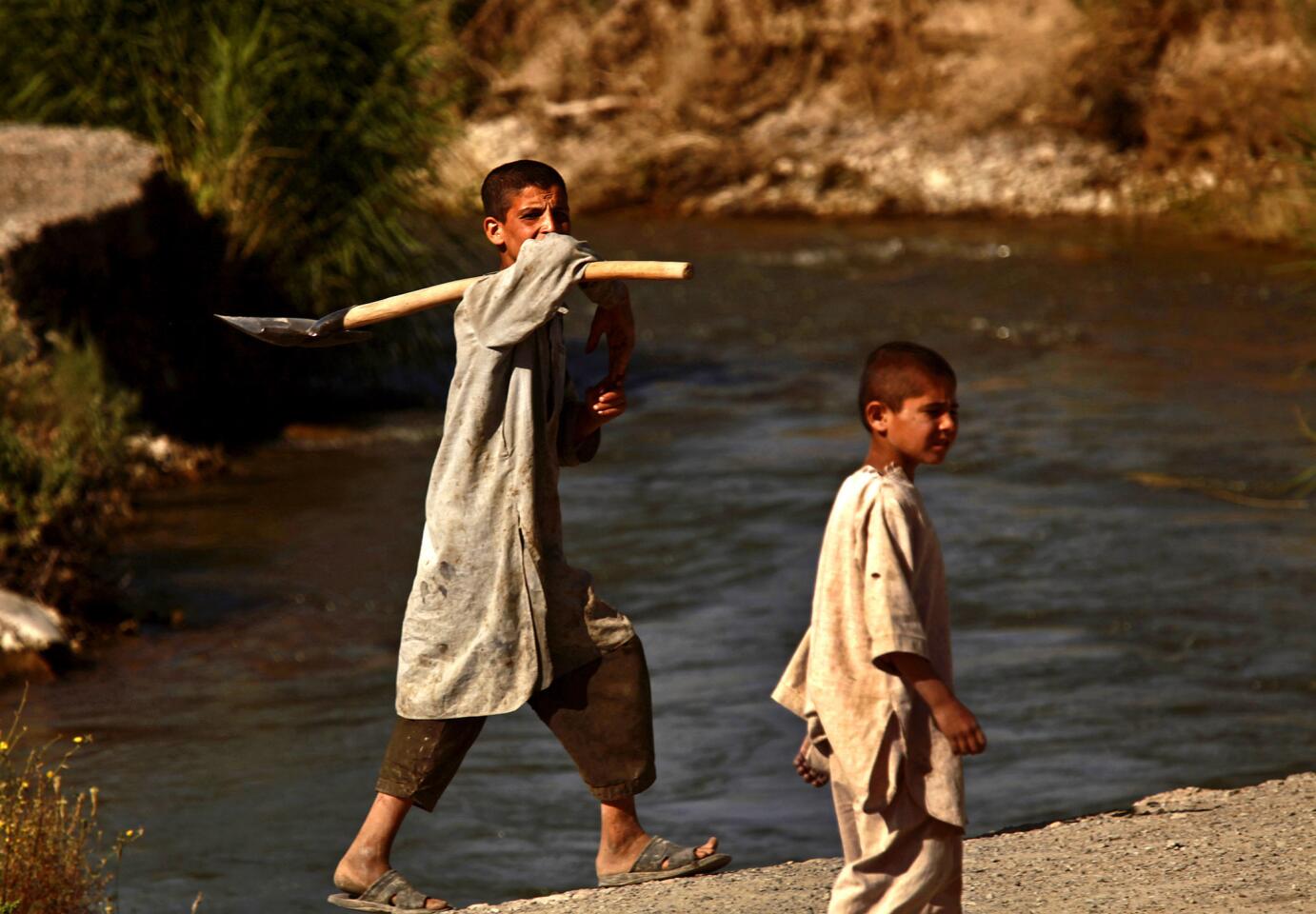
Most of the children in Panjwayi district work in the fields with their parents. (Carolyn Cole / Los Angeles Times)
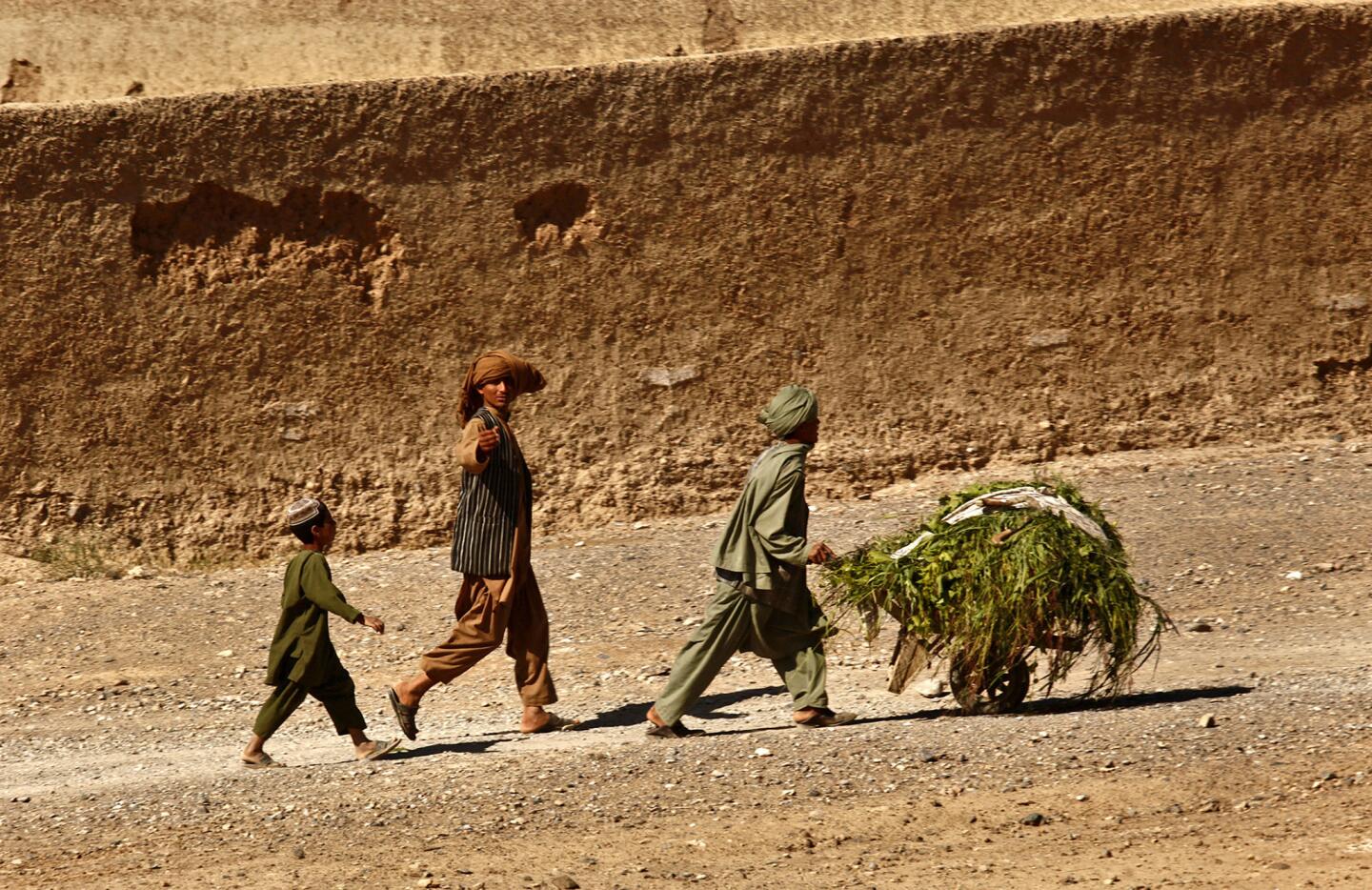
Panjwayi children help with farming. (Carolyn Cole / Los Angeles Times)
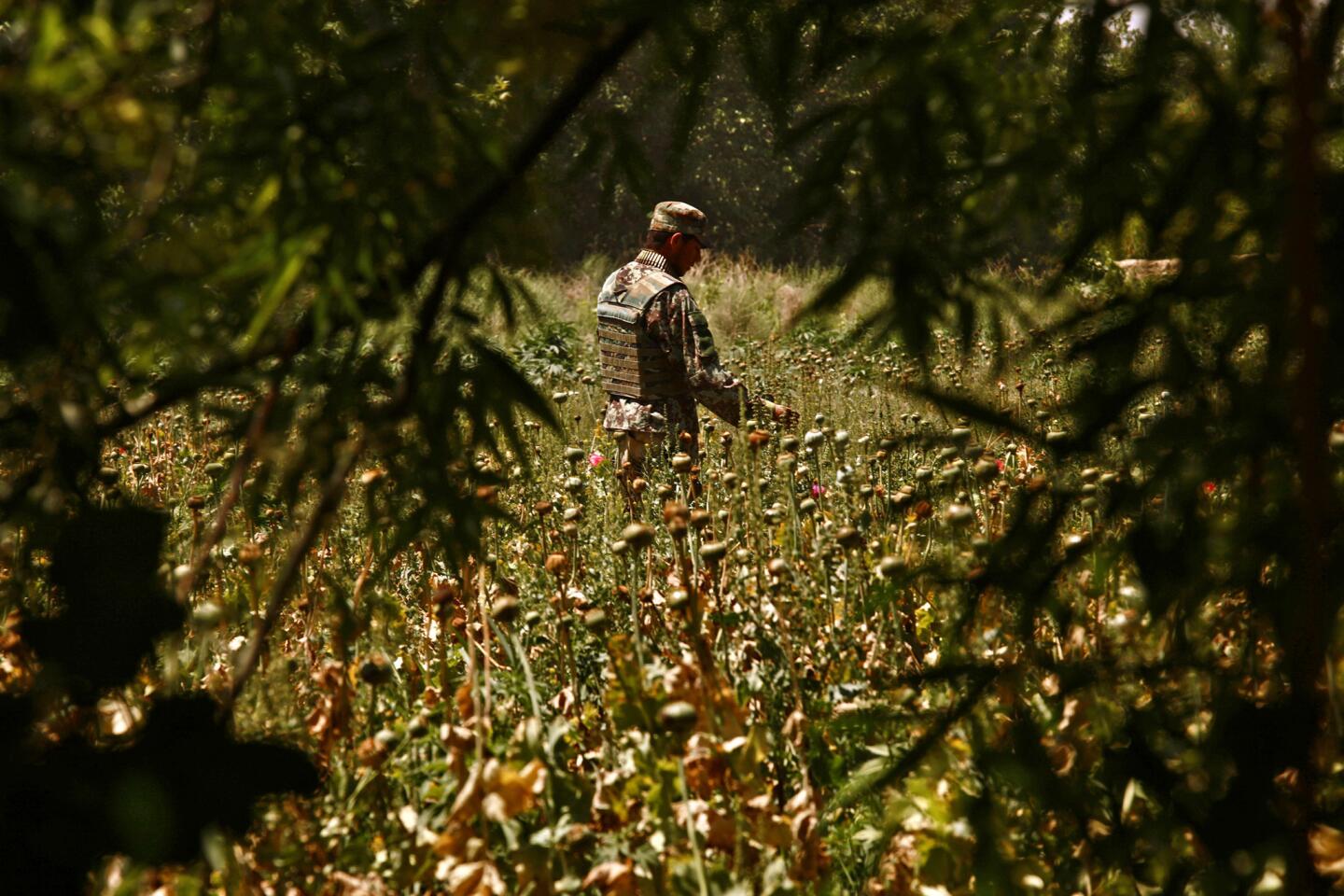
An Afghan soldier walks through a poppy field in the area of Zangabad in the Panjwayi district of Kandahar. Insurgents still profit from the lucrative opium crops. (Carolyn Cole / Los Angeles Times)
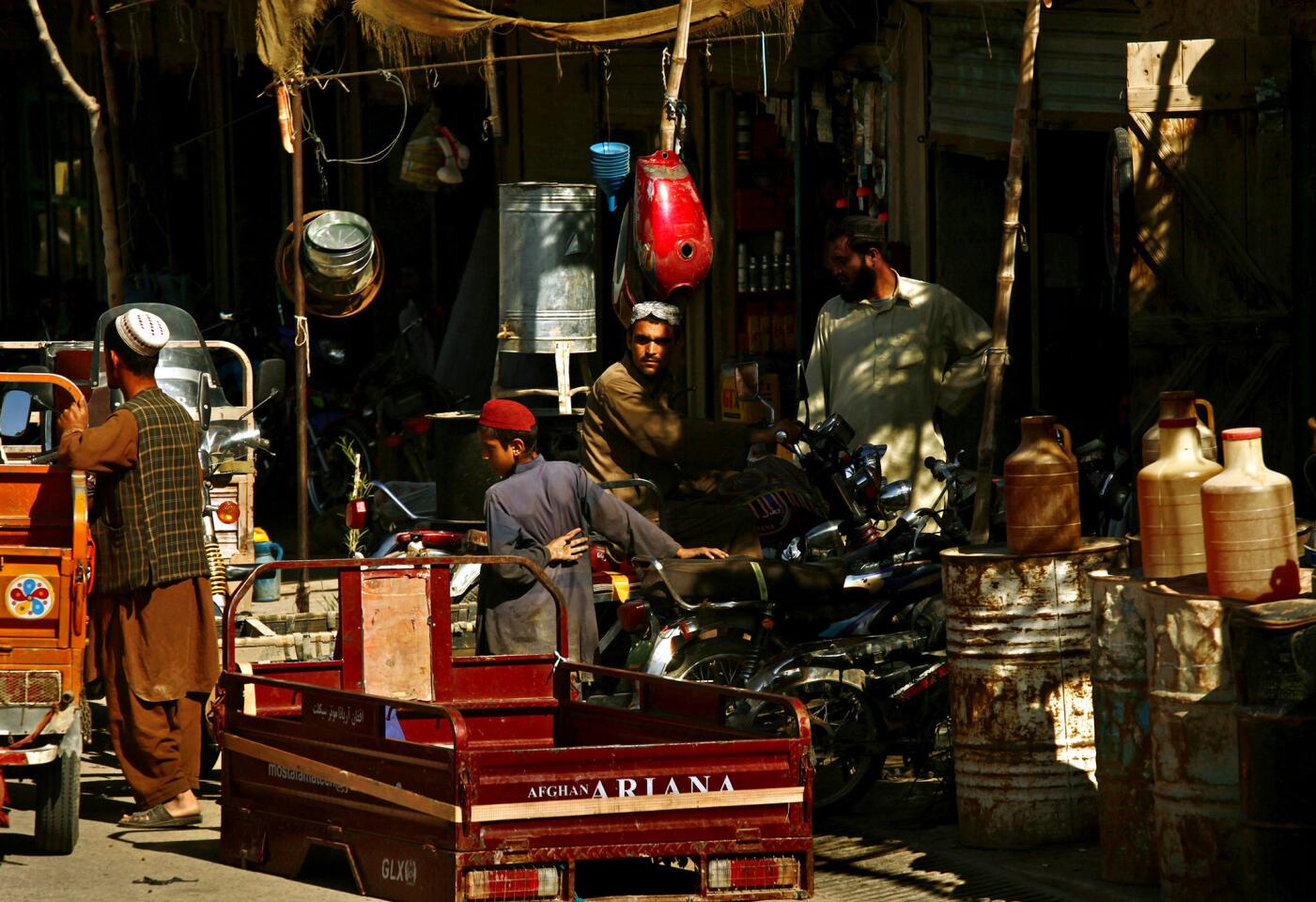
Roadside bombs are often made using plastic gasoline jugs filled with ammonium nitrate fertilizer and other ingredients. (Carolyn Cole / Los Angeles Times)
Advertisement
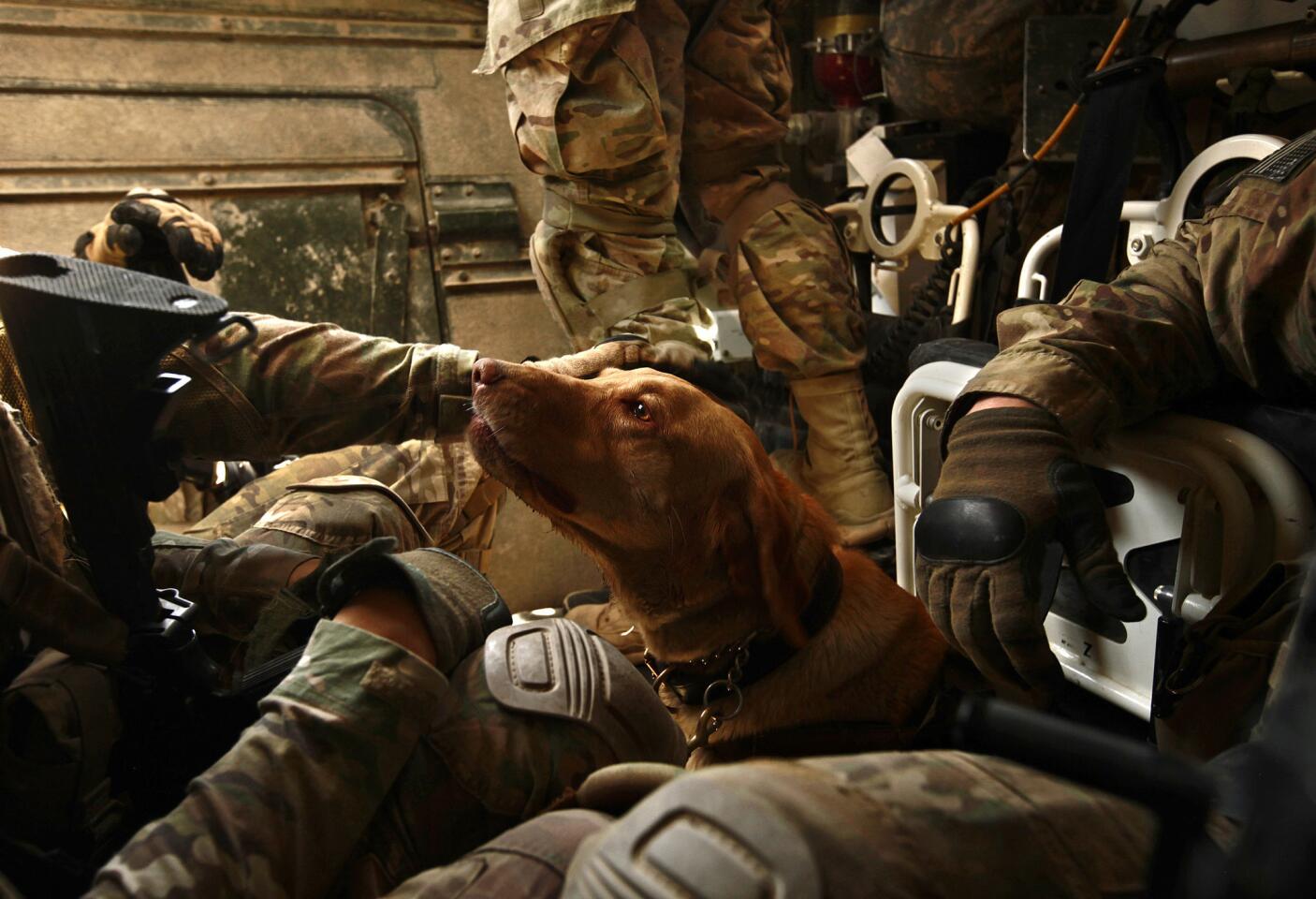
At the end of a long patrol in Panjwayi, Sassy rides back to base inside a Stryker vehicle along with U.S. soldiers. The dog was was furloughed after failing to detect explosives. (Carolyn Cole / Los Angeles Times)
